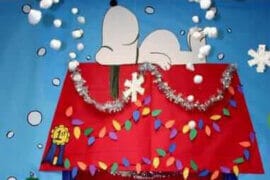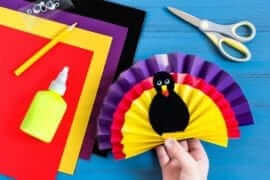A Teacher’s Guide to Making War on the Common Cold
The dreaded flu season has crept into our classrooms once again. Kids have already begun sneezing and coughing, signaling my need to ready my bag of tricks: tissue boxes, sanitizer, Lysol disinfectant spray, and wipes. Here’s what I do to keep germs out of my classroom, and keep my students and me healthy and in class every day, where we belong.
- Sanitizer bottles – not singular, but plural! Keep sanitizer bottles next to the tissue box, by the door, and next to the pencils, computers, and any other shared supplies. All of us teachers know that children of all ages can be forgetful, and germs are far from their everyday thinking… cue the sanitizer bottles placed in strategic locations to remind them that NOW is a good time to use it.
- Wipe- Spray-Clean. This one is obvious, but this chore doesn’t have to fall completely on you. Kids really love to help. At the end of each day, have the students wipe down their tables and chairs. Assign a responsible student to wiping the handles and door knobs in the room, and another student to the shared supplies. Don’t forget to wipe any student-used computers, mouses, and keyboards. If you have a sink in your room, clean your faucets daily, where a scary number of germs are hiding.
- No water fountain! When checking where the germs are hiding in school buildings, many studies have shown that the water fountains have more bacteria than any other surface in the building! Keep your kids away! This is one I tell my own children as well. I encourage my students to have their own water bottle in the classroom, locker, or other special location that is compliant with the school’s policies.
- Send the sickies out! Keep your eyes open for struggling students. Whether they like it or not, sick kids should be sent to the nurse. Some kids will not be sent home, even if they are sneezing, coughing and have runny noses. It’s a good idea to have a sick corner if space allows. Separating them allows some air between them and the other students, and you can do a quick wipe down after that student leaves.
- Teach, review, and model. If you have little ones- or older ones-that need reminding, demonstrate better methods for sneezing and coughing into their shoulder or elbow instead of their hands. Show them how to wash their hands, using warm water and soap. Model proper tissue use, instead of watching them wipe their nose with the back of their hands and sleeves, or listening to their constant sniffling.
- Clear the air. This is a luxury item to which you may not have access, but an air purifier is helpful in any classroom. At the very least, crack the windows every once in a while, even if it’s cold; it will help clear the air.
- Do the extra for yourself, and encourage your students to do the same. That means eating healthy, drinking lots of water, and getting extra sleep. I am personally a believer in extra supplements that boost my immune system and help me to fight any germs that might sneak past my defenses. There are multiple products out there that claim to help: vitamin C, Echinacea, elderberry, airborne, emergen-c, apple cider vinegar, and honey. You might even consider giving yourself the extra protection of a flu shot.
- HIDE your supplies. Sharing is not always caring! As a teacher, I am not interested in my students touching my pens, pencils, staplers, or anything else on my desk that will transfer their germs to my hands. Make sure you have your own supplies that are kept inside your desk, and have a student supply table for their needs. Encourage your students to bring their own pencils every day, rather than borrowing one from the table.
- Time to prepare. Be prepared, because inevitably, even after all precautionary efforts, you will still get sick. When you feel it coming, push those emergency plans aside and prepare some real plans that will occupy your students and continue to cover your curriculum. Prep for a few days of plans, just in case. With this peace of mind, you can get the rest you need without worrying about your classroom and kids. So grab the tea with honey and sleep those germs away.
Jessica Cicalese Kurtz is a veteran middle school engineering and science teacher at Toms River Schools. She has experience as a curriculum developer, teacher trainer, and is a regular contributing writer of NJ-teachers.com.





